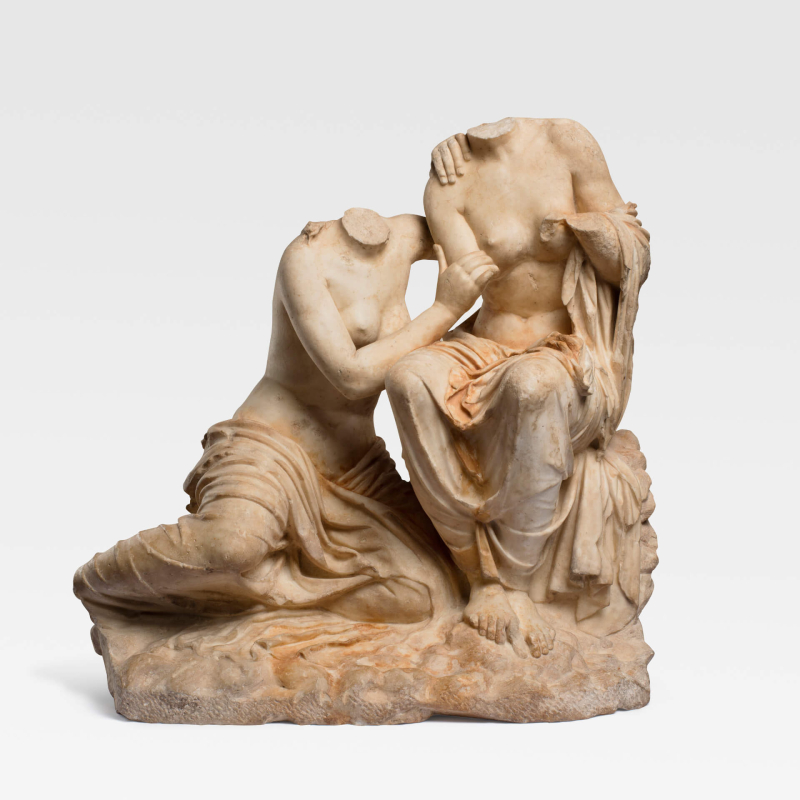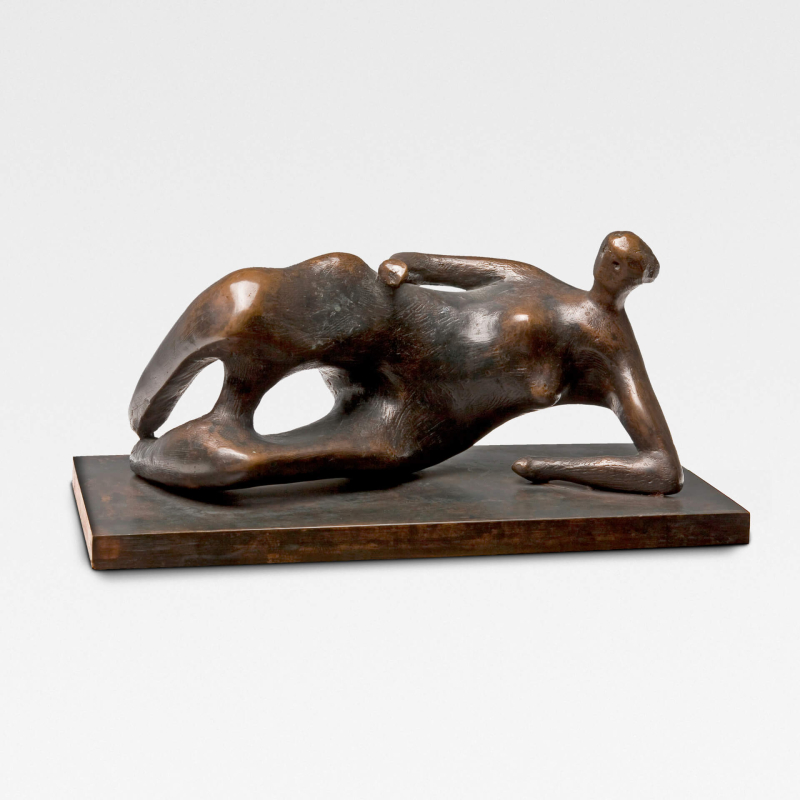Henry Moore
Sculpture on stone or marble is but a temporary loan from nature, modelled by culture. With the passage of time, nature closes the cycle. Moore's modelling, by contrast, considers both nature and culture: he deconstructs the human figure to blend it into the landscape.
Group of two female figures, Early 2nd century AD, white marble
Henry Moore © The Henry Moore Foundation. All Rights Reserved, VEGAP 2022 / henry-moore.org
Reclining woman I, Henry Moore, 1980, bronze















